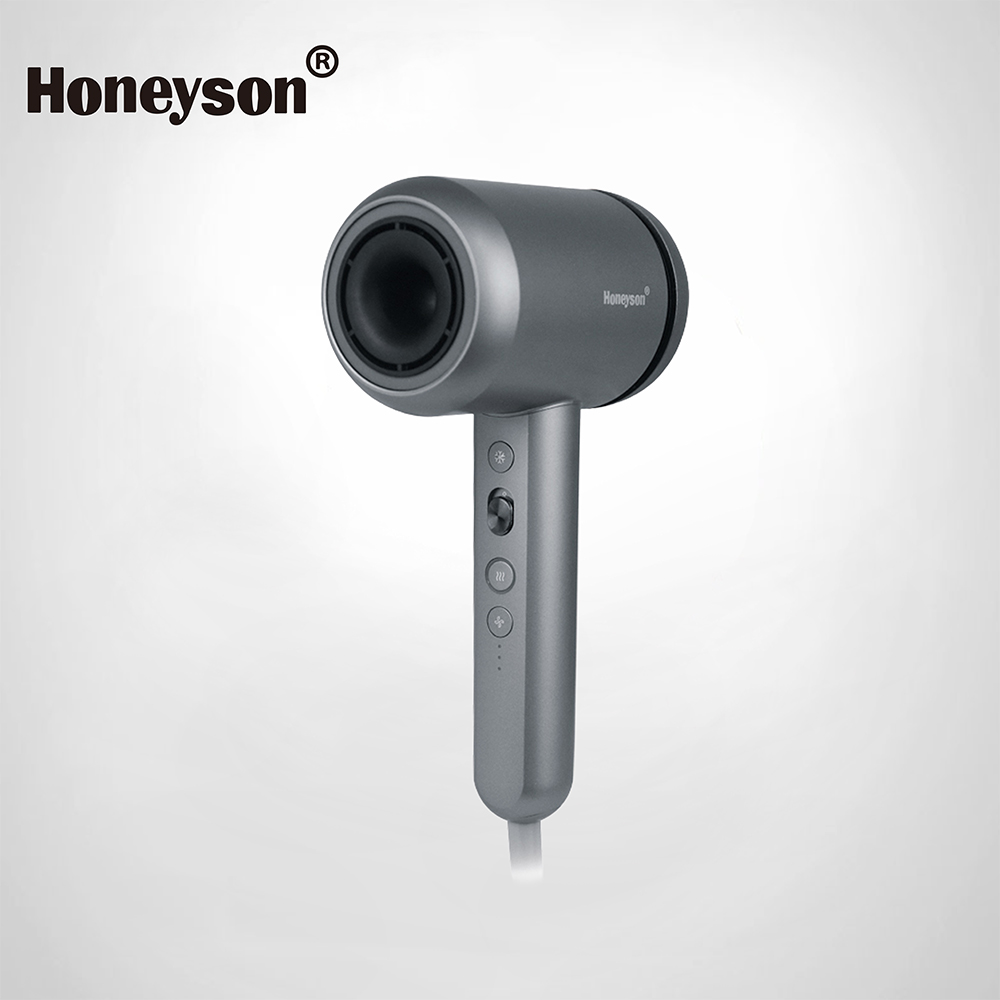האלמנטים החשובים במייבשי שיער מקצועיים עבור מלונות
תעשיית האירוח מכירה בכך שאביזרים שנראים קטנים יכולים להשפיע בצורה משמעותית על שביעות רצון האורח. ביניהם, מייבשי שיער במלון הפכו לנקודת מגע חשובה ב experiência של האורח. נוסעי היום מצפים ליותר מתפקוד בסיסי – הם דורשים ביצועים באיכות סלון שמתחרים או עולים על המכשירים האישיים שלהם בבית.
בעלי בתי המלון של ימינו מבינים שספק של מייבשים לشعر באיכות גבוהה אינו רק עניין של עמידה בצרכים הבסיסיים; אלא עניין של הגשת חווית אורח מוגבהת. בין אם מדובר במתקנים יוקרתיים או בבוטיקים קטנים, הבחירה בציוד לטיפול בשיער בתוך החדר משקפת ישירות את מחויבות המקום לנוחות ובריאות הנוחים.
מפרטים טכניים שמגדירים איכות
עוצמה וביצועים
מייבשי שיער מקצועיים בבתי מלון כוללים בדרך כלל הספקים הנעים בין 1800 ל-2200 וואט, ומספקים את האיזון האופטימלי בין עוצמת ייבוש ליעילות אנרגטית. טווח הספקים זה מבטיח זמני ייבוש מהירים תוך שמירה על טמפרטורות הפעלה בטוחות. דגמים מתקדמים משלבים טכנולוגיית קרמיקה וטורמלין, המייצרים יונים שליליים המפחיתים קרזול ומקדמים שיער למראה בריא יותר.
איכות המנוע במכוסות יבשה של מלונות מהווית חלק חשוב הן בביצועים והן באורך החיים. מנועים מסוג מקצועי מעוצבים כדי לעמוד בשימוש תדיר תוך שמירה על זרימת אויר ופיזור חום עקביים. יצרנים רבים מציעים מנועים עם אחריות מורחבת, שתוכננו במיוחד לסביבה הדורשת של פעולות בית מלון.
תכונות בטיחות ועמידות
מכוסות יבשה מודרניות כוללות מספר תכונות אבטחה להגנה על האורח והרכוש. שקעי ALCI (מפסק נזילה למכשירים) הינם סטנדרטיים, וחותכים את החשמל באופן אוטומטי אם מתגלה חשיפה למים. חיבורים מחוזקים של הכבל וחומרי דפנות עמידים במכות מבטיחים עמידות בתנאי שימוש יומיומי.
מערכות בקרת חום מונעות חימום יתר תוך כדי שמציעות אפשרויות רבות של טמפרטורה להתאמה לסוגי שיער ולחוויות סטייל שונות. כפתורי זרימת אויר קרה הפכו לתכונה סטנדרטית, ומאפשרים לאורחים לקבע את הסטייל שלהם ולצמצם נזק לשיער כתוצאה מחום.
אלמנטים של עיצוב לשיפור חוויית המשתמש
היקשים ארגונומיים
העיצוב הפיזי של מייבשים למלון משפיע בצורה משמעותית על שביעות הרצון של המשתמש. יחידות מאוזנות ארגונומית מפחיתות עייפות זרועות במהלך השימוש, בעוד בקרים הממוקמים בצורה מושכלת מאפשרים התאמה קלה מבלי להפריע לתהליך ההבזק. חומרים קלי משקל ומשטחי אחיזה נוחים משפרים את הנחישות ללא פגיעה ברמת העמידות.
מייבשים מקצועיים למלונות מצויידים לעתים קרובות בחוטים ארוכים יותר (מינימום 6 רגל) כדי לאפשר הגעה מספקת ממיקום הריהוט למראות ול אזורי שימוש נוחים. חוטים מתכנסים או תאי אחיזה מותקנים על הקיר ומעוצבים היטב שומרים על סדר בגופי המייבש תוך מקסימום של שטח פנוי על הדלפק.
שילוב אסתטי
מייבשים מודרניים למלונות משתלבים באופן חלק בעיצובי האמבטיה העכשוויים באמצעות אפשרויות גימור מתקדמות ופרופילים צינורות. kếtלים מטושטשים עמידים בסימוני אצבעות ושומרים על מראה נקי, בעוד השפעות מתכתיות מוסיפות מגע של יוקרה המתאים לציוד אמבטיה איכותי.
אפשרויות הצבע מעדיפות גוונים ניטרליים שמתאימים לстиילים עיצוביים שונים, ומבטיחים שהמייבש ייראה כאלמנט עיצוב מכוון ולא רק כצורך פונקציונלי. ישנן חלות שבוחרות ביחידות עם סימן מסחרי הכוללות את צבעיהן המאפיינים או הלוגואים, ובכך מחזקות את זהות הסימן המסחרי.

תבונות על תחזוקה וקיימום
פרוטוקולי ניקיון וסניטציה
תחזוקת מייבשים של בית מלון במצב מושלם דורשת הליכי ניקוי שיטתיים. מסננים להסרה קלה מקילים על ניקוי תכוף למניעת הצטברות אבק ולשמירה על זרימת אויר אופטימלית. מערכות חיטוי UV משולבות באופן הולך וגובר לפתרונות אחסון, כדי לעמוד בדרישות ההיגיינה הגוברות.
תכניות הדרכה לעובדים מדגישות טכניקות טיפול ונקייה מתאימות להארכת חיי המכשיר תוך שמירה על תקנים עקביים של ניקיון. תכונות שחרור מהיר מאפשרות ניקוי מסננים ותחזוקה יעילה ללא הליכי התנתקות מורכבים.
השפעה סביבתית
مجשים ליבש שיער למלונות חסכוניים באנרגיה תורמים לשיעורי הקיימות של המלונות תוך צמצום עלויות תפעול. טכנולוגיית מנוע מתקדמת מספקת ביצועים גבוהים יותר עם צריכה נמוכה יותר של אנרגיה, ותומכת ביוזמות ירוקות מבלי להקריב את שביעות רצון האורח.
יצרנים משתמשים ביתר שאת בחומרים מחזירים בבניית המכשירים ובתכנוןם כדי לאפשר מחזור עתידי. חלק מהדגמים כוללים רכיבים או אריזות מתכלות, בהתאם להתחייבויות הסביבתיות של המלונות, תוך שמירה על דרישות העמידות.
שאלות נפוצות
איזו עצמה נדרשת ממשגש ליבוש שיער למלונות לביצועים אופטימליים?
יובש שיער מקצועי למלון צריך לספק בין 1800 ל-2200 וואט לביצועים אופטימליים, ומבטיח זמני ייבush קצרים תוך שמירה על טמפרטורות פעילות בטוחות. טווח ההספק מספק תוצאות באיכות סלון תוך עמידה בתקני עמידות מסחריים.
איך מבטיחים המלונות את הבטיחות של משגשי ליבוש השיער בסביבות רטובות?
בתי מלון מיישמים תכונות בטיחות מרובות, כולל הגנה ALCI חובה, מקומות התקמה מתאימים הרחק ממקורות מים והנחיות שימוש ברורות. בדיקות בטיחות חשמליות קבועות ופרוטוקולים לתחזוקה מספקים הגנה נוספת לאורחים.
מה אורך החיים הצפוי של מייבש שיער במלון מסחרי?
מייבש שיער מלון איכותי מיועד לשרוד 1000-1500 שעות של פעילות בתנאי שימוש נורמליים. עם תחזוקה נכונה ובנייה ברמה מסחרית, זה בדרך כלל מתורגם לשנתיים לשירות בסביבת מלון סטנדרטית לפני שהחלפה מומלצת.
איך בתי מלון מטפלים בבעיות קיום עם מייבש שיער?
מלונות בוחרים יותר ויותר מודלים יעילים באנרגיה עם חומרים ואריזה ידידותיים לסביבה. נכסים רבים מיישמים תכונות חיסכון באנרגיה כמו טיימרים של כבוי אוטומטי ומחליטים יחידות שנועדו למחזור סופיים, האיזון בין אחריות סביבתית עם דרישות ביצועים.


